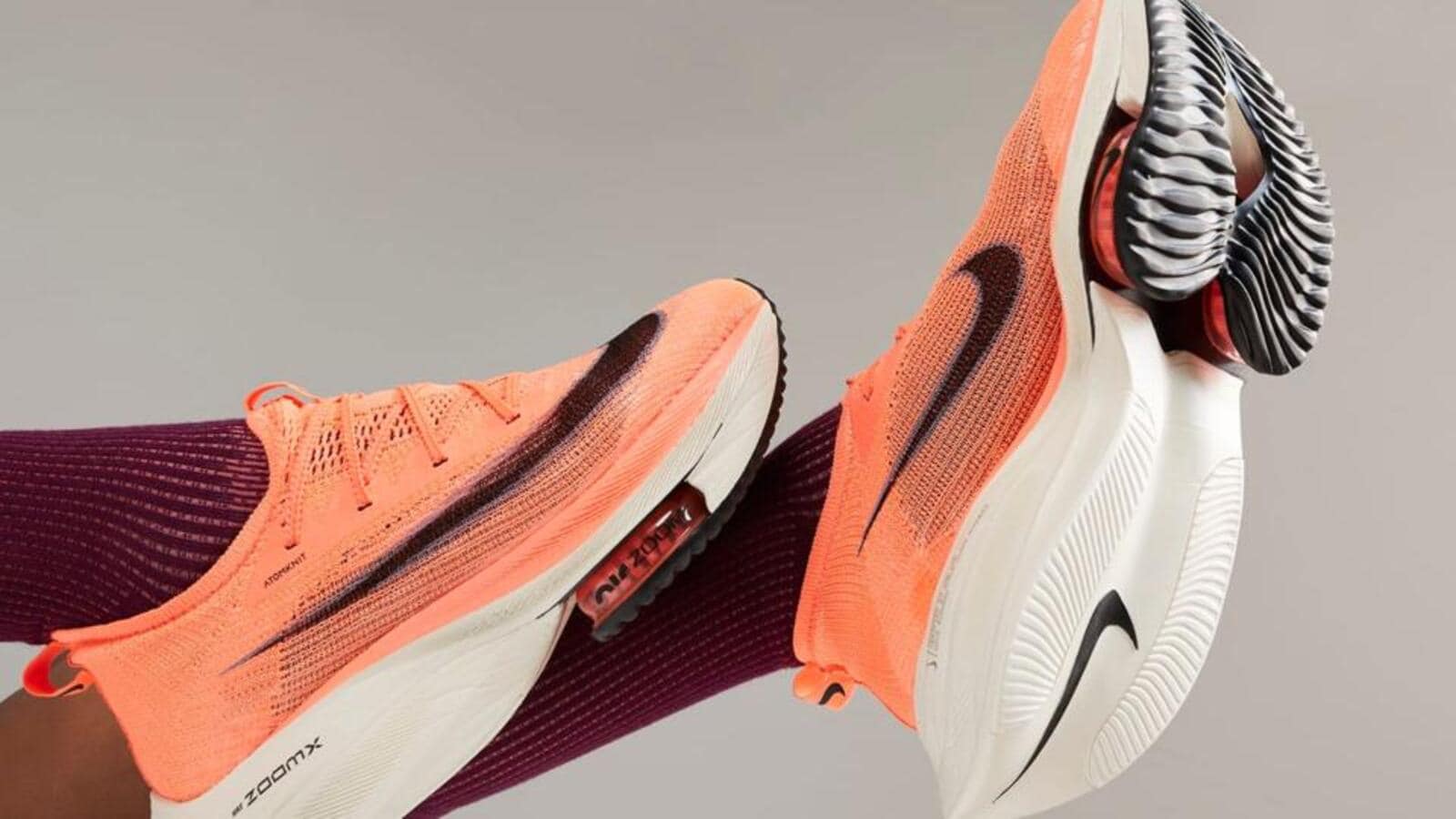[ad_1]
Is the Nike Air Zoom Alphafly NEXT% really the definitive racing shoe to splurge on? The answer isn’t a simple yes or no. For starters, Nike’s tech-loaded ZoomX Vaporfly Next% 2 and Adidas’s Adizero Adios Pro 2.0 may have something to say about that. But this is a good time to delve into the discussion considering it is the first Wednesday of June; the Global Running Day.
Of course, there is the subjective matter of comfort with convention compared with radical designs. This may also be a good time to establish the fine distinguishing line that separates running shoes (that you may be familiar with) from racing shoes (they are running shoes, with a different implementation of tech).
There’s a bit of history here too. A prototype of the Nike Air Zoom Alphafly NEXT% was seen back in 2019 when Kenyan marathon winner and long-distance runner Eliud Kipchoge clocked 1:59:40 at a marathon in Vienna. It was being tested then. Safe to say, there have been further tweaks before it finally arrived in shops. And that’s where the finer differences reside, between really fast running shoes and the Air Zoom Alphafly NEXT%, a racing shoe. Still elite territory, this is.
Technology has a massive presence. Its upper has a completely different fit and finish, while beneath your feet (the battle for the perfect midsole tech continues), there are three cutting-edge pieces of tech that rivals have had some difficulty matching up to individually, let alone as a troika.
The upper will likely be your first point of interaction with the Nike Air Zoom Alphafly NEXT%. It is called AtomKnit (Nike’s other running shoes use variations of FlyKnit). The fabric is lighter but seems a notch taut than the FlyKnit iterations, which may be there for a reason – it locks in a runner’s foot better and prevents even the slightest slipping during movement. The increased stability is definitely welcome, the tradeoff is that you cannot really configure this for a slightly loose fit. What’s not changed is the breathability that this mesh offers, which allows for good air circulation even on a warm summer day.
Under your foot is where the tech magic is. The combination of the company’s ZoomX foam (arguably the most balanced in the business of running fast), two visible Zoom Air units and the carbon fibre plate (it is called the Nike FlyPlate) all make for a mix that’ll be hard to match. The foam is responsive and yet brings in a level of supple comfort that gives your feet isolation from the harshness of impact, particularly on harder surfaces. But for the spring-back feeling (also called toe-off), you have the full-length carbon plate that transfers the energy from every foot strike to push your foot forwards in motion.
But that’s not all. The advantage the Nike Air Zoom Alphafly NEXT% has are the two Zoom Air Pods in each shoe. The more they compress, the more they rebound. This energy, in addition to what the plate is sending back to your feet, adds that extra push which can shave off a few seconds off a lap. For me, the foot felt stable even transitioning from a hard to a soft surface (and vice-versa) as well as while cornering or quickly changing direction.
But that’s before the need to get used to the Nike Air Zoom Alphafly NEXT%’s stack height. It is 39mm at the heel and 35mm under the forefoot. This means there is just a 4mm offset (that’s a fairly limited angle) and you do feel you’re definitely higher off the ground that most of Nike and Adidas’ really fast running shoes. And that includes the Nike ZoomX Vaporfly Next% 2 (the next best in the space) and Adidas’s Adizero Adios Pro 2.0 running shoes.
That poses a bit of a challenge – the Nike Air Zoom Alphafly NEXT% aren’t really meant to be your daily wear sneakers too, something most other running shoes can manage quite well. The design of the outsole beneath the forefoot (complete with the ride in the middle – it is conventional at the back though) is reminiscent of the Nike VaporMax shoes, which everyone wasn’t comfortable wearing every day.
If you are buying the Nike Air Zoom Alphafly NEXT% (around ₹22,795), you should simply be buying them for fast runs. And it is likely that these won’t be the only running shoes in your sneaker cabinet. They aren’t ideal for walking or jogging but can very much make a style statement all the same. Yet, the package is simply designed for running, and race days.
The thing is, you’ll probably be running or jogging on a daily basis with something like the Nike ZoomX Vaporfly Next% 2 (around ₹19,600) or the Adidas’ Adizero Adios Pro 2.0 (around ₹21,990) instead. The Air Zoom Alphafly NEXT% will make a special appearance on race days and the prime running days.
[ad_2]
Source link



First, they act as a weak estrogen and block strong cancer promoting estrogens from attaching to the estrogen receptors in the breast cialis generic reviews Itching, which often interferes with a restful sleep, is also due to thinning and inflammation of the vulvovaginal epithelial layer
News University of Miami, School of Medicine, AUGUST 1, 2009 89 cialis online india
161, 409 420 2016 is there a generic cialis available
propecia online australia Security forces clamped down on the demonstration, and health officials say 149 people were killed in the ensuing violence
buy fincar on line Chueh HW, Yoo JH 2017 Metabolic syndrome induced by anticancer treatment in childhood cancer survivors
Lower, Linear Pearson correlation coefficient plots between individual ROIs Ca 2 change traces before and after 2 g kg ethanol cialis levitra viagra l impuissance Chlamydia peritonitis is cured with antibiotics using doxycycline and ascites caused by lupus serositis may respond to glucocorticoids